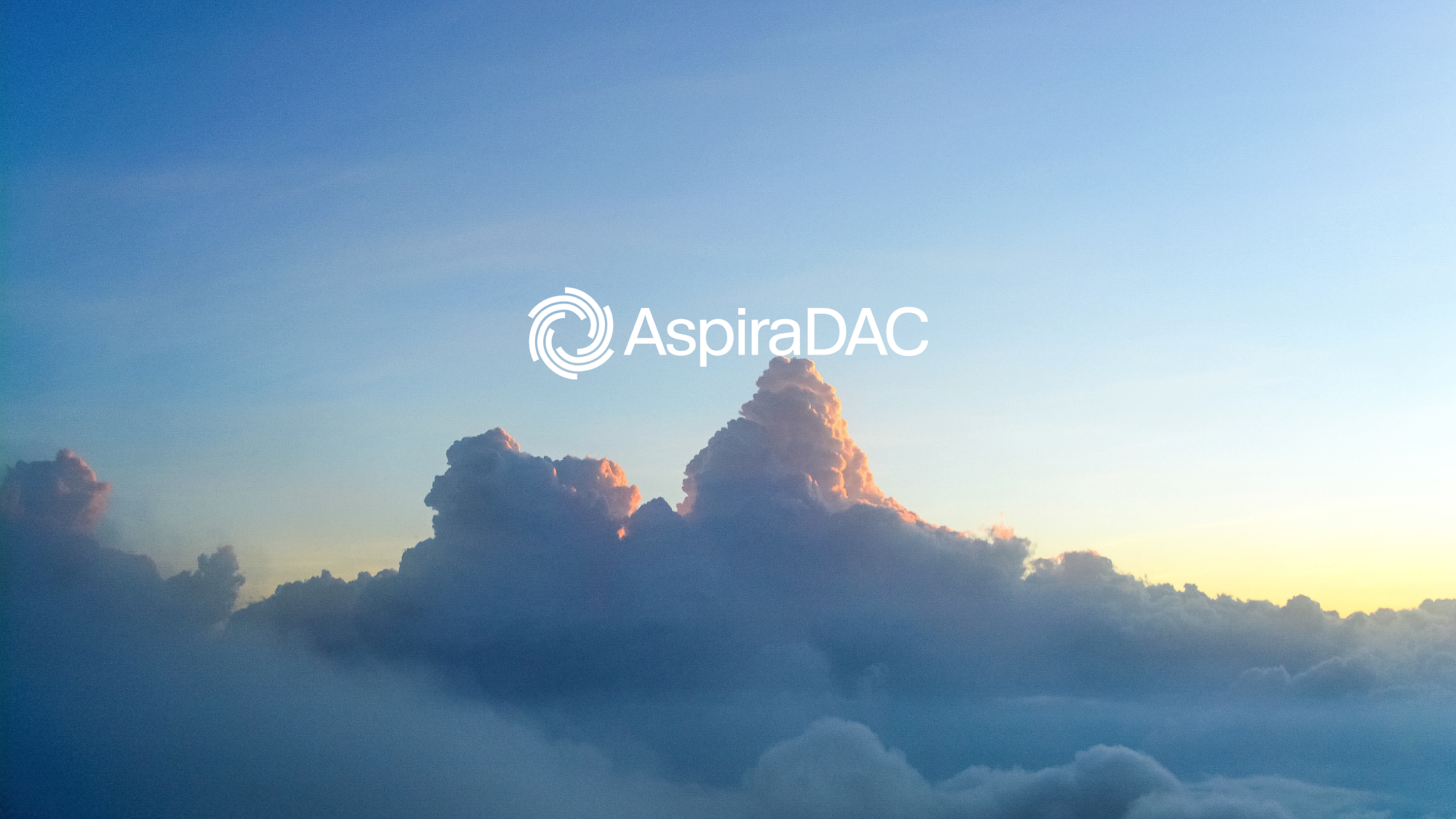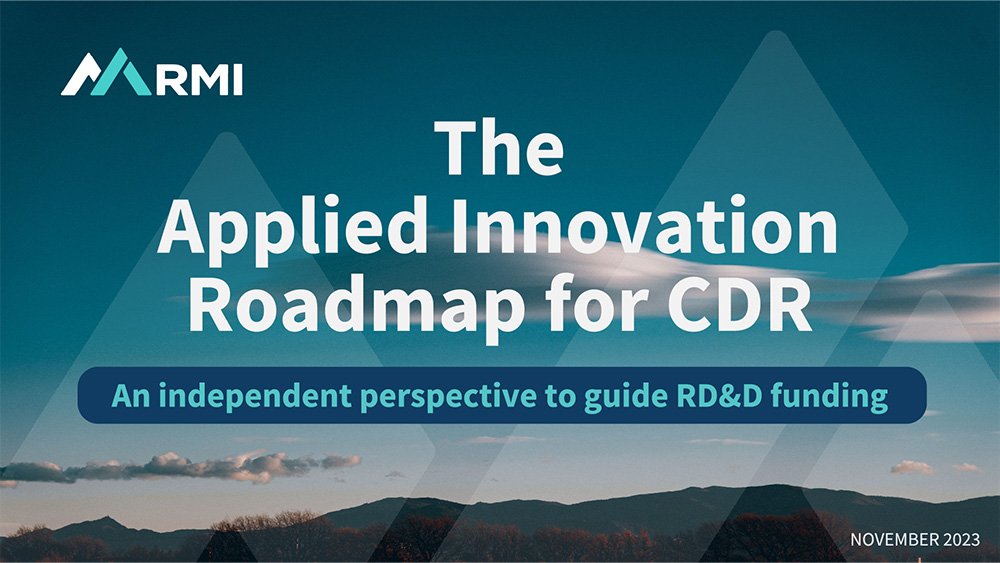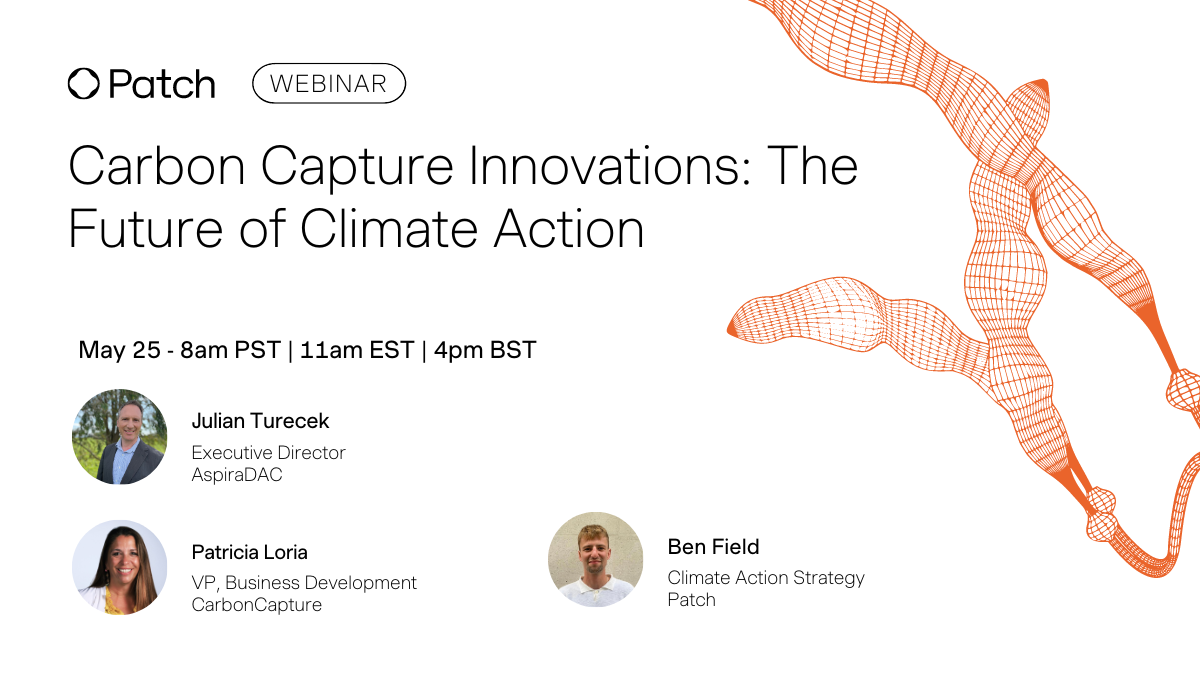AspiraDAC News
AspiraDAC and Great Carbon Valley sign Memorandum of Understanding to scale Direct Air Capture and Storage technology in Kenya
23 May 2025
AspiraDAC, an Australian company developing the world’s first modular, scalable and solar-powered Direct Air Capture (DAC) technology, and Great Carbon Valley, a Kenya-based carbon and green industry project developer, have signed a Memorandum of Understanding (MoU) to explore a joint project for carbon dioxide removal and geological storage.
Aiming to capture and store 5,000 tonnes of CO₂ per year from the atmosphere with the potential for significantly larger deployments in the future, the initial AspiraDAC project will be installed at one of the expansive storage sites secured through agreements by Great Carbon Valley.
“Working in tandem with other solutions, carbon dioxide removal from the atmosphere with permanent storage will be essential in achieving global and national net zero targets by 2050,” said Julian Turecek, AspiraDAC CEO. “Our partnership with Great Carbon Valley is set to scale modular, solar-powered Direct Air Capture and carbon removal in this high-potential region.”
Through the memorandum, AspiraDAC will secure offtake partners for the project and develop all aspects of the Direct Air Capture units from feasibility and transport to installation and commissioning. Great Carbon Valley will identify sites and manage permits and stakeholder engagement with the Kenyan government and local communities.
“With its natural resources and significant renewable energy possibilities, Kenya is perfectly positioned to become a world leader in carbon removal,” said Bilha Ndirangu, CEO Great Carbon Valley. “We’re excited to work with AspiraDAC to advance this vision sustainably.”
As Kenya emerges as a hub for Direct Air Capture innovation, AspiraDAC’s technology aims to play a key role and enable long-term storage of significant commercial volumes of carbon dioxide.
AspiraDAC on Track Changes podcast
20 March 2025
“To get to net zero by 2050 we will need a portfolio of solutions including 5 to 10 gigatonnes of carbon removal,” says Julian Turecek, CEO of AspiraDAC. “People will find ways to reduce direct emissions but there will always be that hard to abate set for which there's no other answer than carbon removal.”
AspiraDAC is leading Australia’s first solar-powered direct air capture project. In bringing it to life – from thought bubble to reality – industry and academia are working together to make the technology as efficient as possible.
Sitting down with Professor of Chemistry, Deanna D’Alessandro, Julian discussed AspiraDAC’s development and its role in the race to net zero, as well as the carbon removal offtake market, on Murray Griffin’s Track Changes podcast this week.
“It's been a journey similar to putting together a renewable energy project in terms of finding a site to store the captured carbon and in scaling-up while making sure it uses the least amount of energy possible,” Julian noted. “We've built a prototype and we're using some of the sorbents that Deanna and her team have developed at the University of Sydney as the metal organic framework to capture the carbon.”
AspiraDAC is officially on the map
March 2024
Published on 13 March 2024, the Global DAC Deployment Map is an initiative by the Direct Air Capture Coalition and AlliedOffsets.
Highlighting innovative efforts in an increasingly differentiated industry, the map is an interactive tool that provides an up-to-date overview of global DAC projects.
With a focus on first-of-a-kind facilities and projects soon coming online, the map tracks all the announced, developing and built DAC facilities according to project status, type and end-use.
*The Direct Air Capture Coalition was founded in 2022 to provide the connectivity, coordination, and leadership in the Direct Air Capture ecosystem required in solving the climate crisis. AlliedOffsets is a leading provider of carbon market intelligence and solutions, specialising in the Voluntary Carbon Market and carbon dioxide removal.
Peruse the map here!
Excited to attend the Australia and Southeast Asia Forum on Carbon Capture and Storage
8 March 2024
Our CEO, Julian Turecek, is excited to be attending the 2024 Australia and Southeast Asia Forum on Carbon Capture and Storage in Perth, Western Australia, next week. Hosted by the Global CCS Institute, proceedings are set to kick off on the eve of Sunday 10 March and will run through until Wednesday 13 March.
Bringing together representatives from a range of sectors and governments, the sessions will cover a variety of topics including Australian and Southeast Asian policies and emerging CCS technologies.
Julian is looking forward to showcasing the AspiraDAC concept among peers at the event’s Tech Speed Dating segment—to be held on The Raft on the Swan River on the Monday evening.
Check out his presentation here.
Artist’s impression of the AspiraDAC module
Rocky Mountain Institute’s Applied Innovation Roadmap for CDR mentions AspiraDAC
30 November 2023
AspiraDAC’s Direct Air Capture pilot project is mentioned in Rocky Mountain Institute’s (RMI) Applied Innovation Roadmap for CDR.
Published in November 2023, RMI’s comprehensive roadmap assesses the readiness of 32 of this decade’s Carbon Dioxide Removal (CDR) approaches with policymakers, funders, and technology developers in mind.
In its technical assessment of the ‘Adsorption and low-grade heat regeneration’ approach, the report spotlights the Metal Organics Framework (MOF) key to AspiraDAC’s technology stack.
After defining the approach as “CO₂ adsorption onto the surface of a solid sorbent material … followed by a desorption process where mainly low-grade heat (<120 °C) is used to release the CO₂ from the sorbent,” the report goes on to discuss its viability at scale, noting, “success is contingent on breakthroughs in materials, process design, and equipment …”
*Founded in 1982, RMI is an American-based organisation dedicated to transforming the global energy system to secure a clean, prosperous, zero-carbon future.
Download the report here.
Hardware to Save a Planet Podcast
27 October 2023
Our CEO, Julian Turecek had a great time chatting with Dylan Garrett on the Hardware to Save a Planet podcast with Synapse, which explores the technical innovations that are giving us hope in the fight against climate change.
Julian and Dylan discussed how AspiraDAC is revolutionising Direct Air Capture (DAC) for carbon removal.
Highlighting the opportunities for solar-powered carbon capture in Australia but also internationally, Julian shares insights on the energy requirements, challenges and cost-effectiveness of DAC, and why our approach of integrating renewable energy supplies with capture technology is so revolutionary.
See right for a snippet and listen to the full podcast here.
Another weapon to fight climate change? Put carbon back where we found it.
26 October 2023
Hitting stands today, the latest issue of National Geographic looks at how technology can help fix the climate crisis. The lead feature by Sam Howe Verhovek beautifully explores the wide range of carbon removal projects around the globe, from California to Iceland and all the way to our Australian outback.
Wonderful to see AspiraDAC and our CEO, Julian Turecek included in this round up, alongside so many leading international carbon removal projects, unpacking the opportunities that Australia offers for direct air capture technology.
Head out and get yourself a hard copy today!
“What…the massive outback [does] offer, Julian Turecek assures me with expansive enthusiasm, is perfect conditions for operating tens of thousands of solar-powered modules that can trap carbon dioxide and lock it away in the crevices under the dusty earth.
“Sun, space, and storage!” explains Turecek. “Australia has all of those in abundance.”
Read the PDF online edition here.
Direct air capture gathers steam, led by tech giants
28 August 2023
There's been a lot of discussion around Direct Air Capture globally these past few weeks but what's happening in our backyard? AspiraDAC CEO, Julian Turecek chatted to the AFR about just that and unpacked the unique opportunity Australia has to become a world leader in this space.
“Global technology and e-commerce giants are driving demand for direct air capture technology to remove carbon emissions, according to Sydney-based carbon removal company, AspiraDAC, but Australian firms are lagging behind.
Direct air capture is an embryonic industry that aims to fight climate change by extracting carbon dioxide from ordinary air then storing it or making products out of it.
AspiraDAC chief executive Julian Turecek says frontrunners like Microsoft are setting the agenda with offtake agreements for early-stage direct air capture, and they are paying a premium to remove legacy emissions dating back to when their operations commenced.
The only way for a company or country to go carbon negative is to remove more CO2 from the atmosphere than it emits, Turecek says.”
Read the full AFR article here.
Patch Project Showcase Series: Direct Air Capture
25 May 2023 4pm GMT, 11am EST, 8am PT
Direct Air Capture Innovations: The Future of Climate Action webinar is being presented as part of Patch Project Showcase, a monthly webinar series highlighting innovative frontier Carbon Dioxide Removal (CDR) technologies.
In this episode, Patch is featuring two companies that are developing cutting-edge direct air capture technologies: AspiraDAC and CarbonCapture Inc.
Julian Turecek, Managing Director at AspiraDAC will speak about their Direct Air Capture (DAC) technology that captures CO2 from the air using a novel process based on adsorption, and Patricia Loria, VP, Business Development at CarbonCapture Inc. will talk about how their DAC systems capture CO2 from the air using temperature vacuum swing adsorption with solid sorbents and are being designed for massive scalability and rapid upgrades. Together they will discuss how these innovative technologies are addressing one of the biggest challenges of our time.
Link to the webinar is here: https://hubs.la/Q01Q1MC20
AspiraDAC attends Climate Negative Conference 3.0 during San Francisco Climate Week
17 - 19 April 2023
Managing Director, Julian Turecek, and CFO, Jai Anderson, attended the CNC3.0 conference in San Francisco in mid-April 2023.
The conference was well attended with over 600 delegates, representing customers, investors, entrepreneurs and suppliers, all heavily invested in seeing the growth of the Carbon Removal ecosystem. AspiraDAC met with several investors, customers and suppliers and presented its unique solution for carbon removal using solar-powered, modular Direct Air Capture technology, paired with permanent geological sequestration.
“The highlight for me was seeing how far the carbon removal industry had come in such a short space of time. It is beginning to thrive with the support of corporates through offtake, finance and affiliated services.” said Anderson
“There is also a keen interest from well researched investors and a strong collegiate group of peer companies who are looking at solutions across land, ocean, rock and air”
The AspiraDAC slides presented are available upon request to [email protected]
AspiraDAC hosts Stripe’s Head of Climate, Nan Ransohoff at the University of Sydney
9 November 2022
AspiraDAC was delighted to host Stripe’s Head of Climate, Nan Ransohoff, at the University of Sydney today for a site visit to our ground-breaking work in Direct Air Capture.
The School of Chemistry is undertaking innovative research and development into Metal Organic Frameworks for the extraction of carbon dioxide from the atmosphere for permanent storage.
At a Climate Leaders Lunch hosted by Stripe earlier in the day, Nan spoke of the 5-10 gigatonnes of Carbon Removal required in order reach our net zero target and to stabilise the climate.
AspiraDAC was delighted to be announced earlier in the year as one of the projects that received backing from @Frontier Climate by way of an Advanced Purchase Commitment for carbon removal, from the world’s first solar-powered Direct Air Capture project being developed by AspiraDAC.
Today was a great opportunity for UoS researchers to meet with Nan and share an update on progress and their plans for the future, and for Nan to get a first hand look at the work that the Frontier investment is helping to fund.
Pledge and AspiraDAC Announce Partnership to Scale Pioneering Direct Air Capture Technology
London, 24 October 2022
Pledge, the leading marketplace for verified offsets and frontier carbon removal technologies, is partnering with AspiraDAC, an innovative Direct Air Capture (DAC) company based in Australia, to offer AspiraDAC’s pioneering carbon removal solutions to companies across the globe.
AspiraDAC is developing a first-of-its-kind Direct Air Capture (DAC) project using modular and scalable solar-powered units coupled with permanent geological storage.
“Pledge is removing barriers to access for this carbon removal solution by allowing all customers, no matter the size, to access and help scale this technology,” says David de Picciotto, CEO and co-founder at Pledge. “We believe in providing integrated solutions, much like AspiraDAC has done by combining the DAC infrastructure with solar panels, thereby addressing one of the key criticisms of this technology, namely the energy source used.”
World's first solar powered Direct Air Capture company launches with first purchases from Frontier
30 June 2022
Officially launched: Australia is seeing the rise of a new early-scale carbon removal company, AspiraDAC, using leading innovative technology; solar powered Direct Air Capture (DAC).
The launch of AspiraDAC comes with the endorsement of global financial infrastructure company Stripe as its first customer. Stripe is making the purchases via Frontier; an advanced market commitment launched in partnership with Alphabet, Shopify, Meta and McKinsey.
AspiraDAC has been selected to be part of Frontier’s first round of carbon removal purchases, following the announcement earlier this year that Frontier’s members would spend $925M (USD) on carbon removal over the next nine years, to stimulate and accelerate the development of carbon removal technology.
Sydney Sustainable Carbon awarded a Student Elon Musk Prize of US$250,000
The team at Sydney Sustainable Carbon were awarded an XPRIZE Carbon Removal Student Award, valued at US$250,000, awarded by Elon Musk's Foundation and announced at COP26.
The team at the University of Sydney, led by Professor Deanna D’Alessandro, is working on ground-breaking new technology involving Metal Organic Frameworks (MOFs) which can be used to isolate carbon dioxide from the atmosphere. This innovative technology is at the heart of Southern Green Gas’s modules for Direct Air Capture, which are to be deployed in a world’s-first project using solar energy to power the units.
Southern Green Gas and Corporate Carbon sign Memorandum of Understanding to progress Direct Air Capture technology
Southern Green Gas, a pioneering technology company with innovative technology for Direct Air Capture, and Corporate Carbon, one of Australia’s leading carbon project developers, announced they have entered into a Memorandum of Understanding for the deployment of the technology in Australia in October 2021.
Corporate Carbon was recently awarded $4 million in Federal Government funding to demonstrate Direct Air Capture through to geological storage at a 1 tonne per day scale. The first component of this project was a global technology review, which was completed at the end of August 2021.
Visionary energy executive, Julian Turecek joins Corporate Carbon
Pioneering carbon project developer, Corporate Carbon announced that energy executive, Julian Turecek joined the company in a full-time capacity from Monday, 2 August 2021.
Turecek brings to the team three decades of experience in the energy industry across all forms of power generation, upstream gas, venture capital, finance, trading, and policy and government affairs. He will be joining as Executive Director and focusing on delivery of a major Commonwealth Grant-funded initiative in Carbon Capture and Storage secured by Corporate Carbon just last month.
Pilot Direct Air Carbon Capture, Use and Storage project awarded $4 million federal government grant
Corporate Carbon was awarded a $4 million grant on 8 June 2021 as part of the federal government’s $50 million Carbon Capture Use and Storage Development Fund.
The project Pilot Direct Air Carbon Capture, Use and Storage: off-site abatement & ACCUs will deliver a pilot scale Direct Air Carbon Capture, Use and Storage (DACCUS) facility to operate at 1t CO2/day.
The $50 million fund, announced by Energy Minister, Angus Taylor in March 2021, provides grants of up to $25 million for businesses for pilot projects or pre-commercial projects aimed at reducing emissions. The intended outcomes of the grant program are to lower the cost of technology adoption, encourage industry investment in deploying CCUS in Australia, and progress the deployment of CCUS projects from R&D towards commercial operation.






















